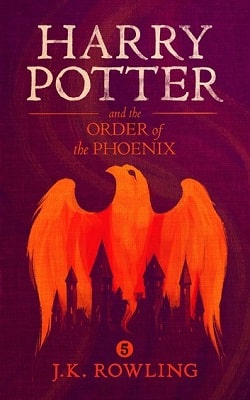"Good Lord," he sighed, "what am I to do with you?"
"If you don't want her, Captain," said Bigelow jovially, "I'll be happy to have her."
Despite the fact that he was chilled to the bone, Mender laughed as he hugged his wife, nearly crushing the breath out of her. "Do not tempt me, Mr. Bigelow, do not tempt me."
Half an hour later, Roxanna was back on board the Paloverde, changed into dry clothing and warming her body around the big brick-and-cast-iron stove used to melt whale blubber. Her husband and cre
w did not spare any time for creature comforts. The sails were hurriedly removed from the hold where they had been stowed, and were carried into the rigging. Soon they were unfurled, the anchors were pulled off the bottom, and, with Mender at the helm, the Paloverde began to thread her way through the melting water between huge icebergs toward the open sea again.
After enduring six months of cold and near starvation, the captain and crew were free of the ice and headed home, but not before they had filled her casks with seventeen hundred barrels of sperm oil.
The strange obsidian skull that Roxanna had taken from the frozen Madras went on the family mantel of their home in San Francisco. Mender dutifully corresponded with the current owners of the Skylar Croft Trade Company of Liverpool, who were operating under a new name, and sent off the logbook, giving the position where they had found the derelict ship on the shore of the Bellingshausen Sea.
The sinister and dead relic of the past remained in frigid isolation. An expedition consisting of two ships was mounted from Liverpool in 1862 to recover the Madras's cargo, but neither ship was ever seen again and were presumed lost in the great ice floe around Antarctica.
Another 144 years would pass before men were to rediscover and set foot on the decks of the Madras again.
AS CLOSE TO HELL AS YOU CAN GET
March 22, 2001
Pandora, Colorado
The waning stars in the early-morning sky blazed like a theater marquee when seen from 9,000 feet above sea level. But it was the moon that had a ghostly look about it as Luis Marquez stepped from his little wooden frame house. It wore a curious orange halo that he had never seen before. He peered at the odd phenomenon for a few moments before walking across the yard to his 1973 Chevy Cheyenne 4X4
pickup truck.
He had dressed in his work clothes and slipped quietly out of the house so as not to wake his wife and two daughters. His wife, Lisa, would have gladly gotten up and fixed breakfast and a sandwich for his lunch pail, but he insisted that 4:00 A.M. was too early for anyone but a mental case to be roaming around in the dark.
Marquez and his family lived simply. With his own hands, he had remodeled the house that had been built in 1882. His children went to school in nearby Telluride, and what he and Lisa couldn't buy in the booming resort ski town, they brought home during monthly shopping trips to the larger ranch community of Montrose, sixty-seven miles to the north.
His routine was never complete until he lingered over his coffee and stared around what was now a ghost town. Under the spectral light from the moon, the few buildings that still stood looked like tombstones in a cemetery.
Following the discovery of gold-bearing rock in 1874, miners poured into the San Miguel Valley and built a town they called Pandora, after the Greek fairy tale about a beautiful girl and her box full of mysterious spirits. A banking interest in Boston bought up the mining claims, financed the mine's operation, and constructed a large ore-processing plant only two miles above the more famous mining town of Telluride.
They'd called the mine the Paradise, and soon Pandora became a small company town of two hundred citizens with its own post office. The houses were neatly painted, with mowed green lawns and white fences, and although Pandora was set in a box canyon with only one way in and out, it was not isolated.
The road to Telluride was well maintained, and the Rio Grande Southern Railroad ran a spur line into town to haul passengers and supplies to the mine and the processed ore across the Continental Divide to Denver.
There were those who swore the mine was cursed. The human cost of extracting fifty million dollars'
worth of gold over forty years was high. A total of twenty-eight hardrock miners had died inside the damp and forbidding shafts-- fourteen in one disaster alone-- while close to a hundred were maimed for life because of freak accidents and cave-ins.
Before the old-timers who had moved down the road and resided in Telluride died off, they'd claimed that the ghost of one of the dead miners could be heard moaning throughout the ten miles of empty shafts that honeycombed the steep, ominous gray cliffs that rose nearly 13,000 feet into the lazy blue skies of Colorado.
By 1931, all the gold that could be profitably processed from the ore with the aid of chemicals was exhausted. Played out, the Paradise Mine was shut down. Over the next sixty-five years, it became only a memory and a slowly healing scar on the panoramic landscape. Not until 1996 had its haunted shafts and tunnels heard the tread of boots and the clang of a pickax again.
Marquez shifted his stare onto the mountain peaks. A four-day storm had come and gone the week before, adding four feet of snow to the already packed slopes. The increasing air temperatures that accompanied the spring turned the snow into the consistency of mushy mashed potatoes. It was the prime avalanche season. Conditions were extremely hazardous in the high country, and skiers were warned not to wander from the established ski runs. As far as Marquez knew, no major snowslide had ever struck the town of Pandora. He was secure in knowing his family was safe, but he ignored the risk to himself every time he made the drive up the steep icy road in winter and worked alone deep in the bowels of the mountain. With the coming of warm days, a snow slide was an event waiting to happen.
Marquez had seen an avalanche only once in his years on the mountain. The sheer magnitude of its beauty and power as it swept rocks, trees, and snow down a valley in great clouds, along with the rumbling sound of thunder, was something he had never forgotten.
Finally, he set his hard hat on his head, slipped behind the wheel of the Chevy pickup, and started the engine, letting it idle for a couple of minutes to warm. Then he began cautiously driving up the narrow, unpaved road that led to the mine that once was the leading gold producer in the state of Colorado. His tires had made deep ruts in the snow after the last storm. He drove carefully as the road wound higher up the mountain. Very quickly, the drop-off along the edge stretched several hundred feet to the base. One uncontrolled skid and rescuers would be untangling Marquezs broken body from his mangled pickup truck on the rocks far below.
Local people thought him foolish for buying up the claims to the old Paradise Mine. Any gold worth extracting was long gone. And yet, except for a Telluride banker, no one would have dreamed that Marquezs investment had made him a rich man. His profits from the mine were shrewdly invested in local real estate, and with the boom of the ski resort he had realized nearly two million dollars.
Marquez was not interested in gold. For ten years, he had prospected around the world for gemstones. In Montana, Nevada, and Colorado, he had prowled the old abandoned gold and silver mines searching for mineral crystals that could be cut into precious gems. Inside one tunnel of the Paradise Mine, he discovered a vein of rose-pink crystals in what the old miners had considered worthless rock. The gemstone in its natural state, Marquez recognized, was rhodochrosite, a spectacular crystal found in various parts of the world in shades of pink and deep red.















